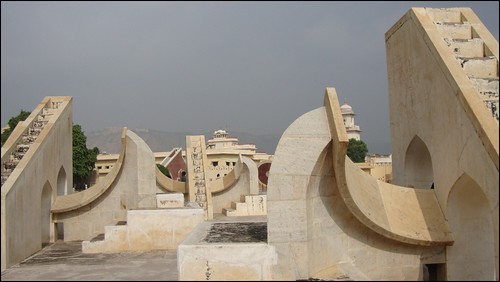
Jantar (instrument) Mantar (calculation) is a complex of astronomical measuring tools
Jantar Mantar is the largest of five ancient Indian observatories, completed in 1734. These will constructed under orders from Maharaja Sawai Jai Singh II. This king accomplished so many things in his thirty-year rule that his title of maharaja, or grand king, was modified by "sawai", which is Hindi for one and one quarter. The massive astronomical devices at Jantar Mantar were used mostly for religious purposes: marking times of the year for Muslim and Hindu festivals. Jai Singh was a religious astronomer himself and strove for accuracy in timing important decisions regarding politics with heavenly events, for the gods' favorable assistance.
Samrat Yantra
At a height of nearly thirty meters, the shadow of Samrat Yantra (supreme device) moves about one milimeter per second across its dial, giving time accurate to two seconds. It would be more accurate, but the builders misaligned the instrument, most likely due constructing something this large without proper tools for precision.
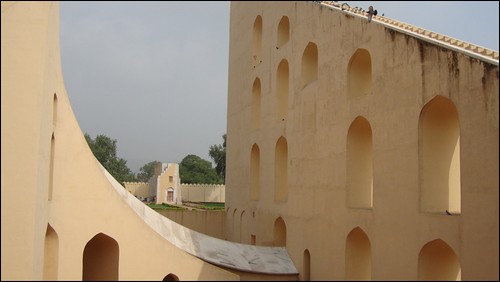
Samrat Yantra is the world's largest sundial
Jai Prakash Yantra
Twin bowls, each over five meters in diameter, were constructed from metal with marble covers. These metal-marble plates could be removed so people could enter the bowls to take readings. An astronomer would enter the bowl where a slab was removed and use a sighting device to find celestial positions of stars. Sunlight only hits the center of the bowl during the vernal equinox.
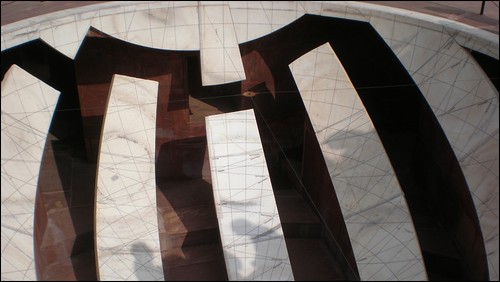
Jai Prakash Yantra
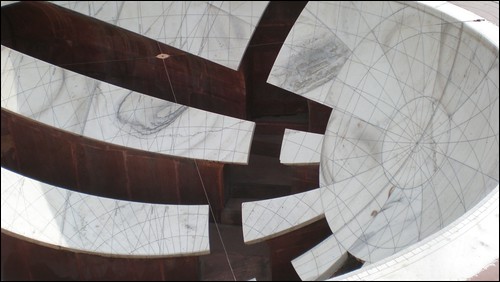
Jai Prakash Yantra
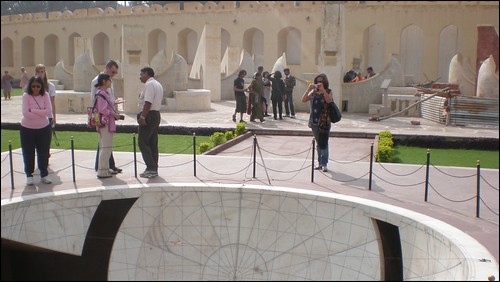
People in the photo for scale perspective
Astrology
The Rashivalaya Yantras are a group of devices for tracking key stars in zodiac constellations. Astrology was equally important to the astronomers at Jantar Mantar.
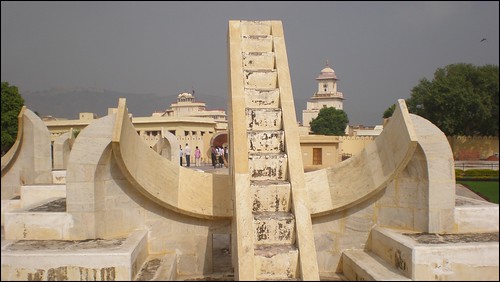
Steps and dial of one constellation tracker

Some of the instruments are being restored
Other sites in Jaipur
Check out the Amer Fort, which has a mix of Hindu and Muslim architecture. Get there early in the morning (unlike us), so you can take an elephant ride to the top of the hill.
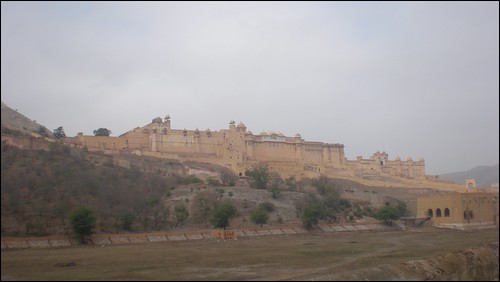
Amer Fort, once the rulers' palace
The Jal Mahal is a five-storied palace of red sandstone. I believe it is being converted into a hotel at the present time. It contains Bengali construction elements, setting it apart for all other area buildings.
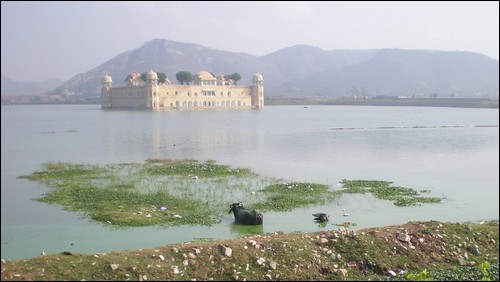
Most of Jal Mahal's floors are below the water line
At Jaigarh Fort, you can view the world's largest wheeled cannon. This was also constructed during the reign of Jai Singh II.
Speaking of the "world's largest", Jaipur's City Palace contains the largest silver objects ever constructed. The two jars were used to carry water from the Ganges to England in 1902, for the coronation of King Edward VII. Each jar is made from a single sheet of silver, which came from melting fourteen thousand coins. City Palace also has a weapons display and a museum.
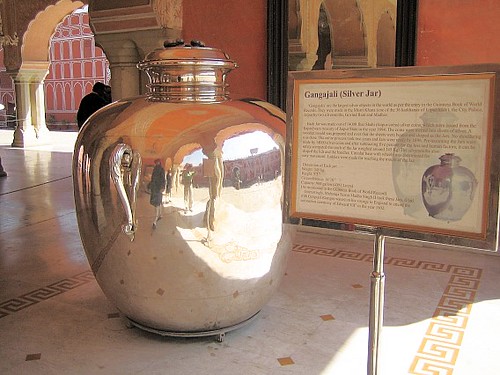
One of City Palace's silver jars (photo by Shoban Sen)
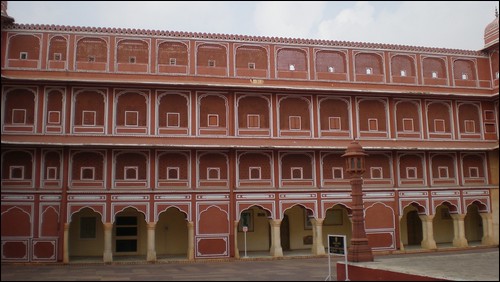
The City Palace
Ending the Day
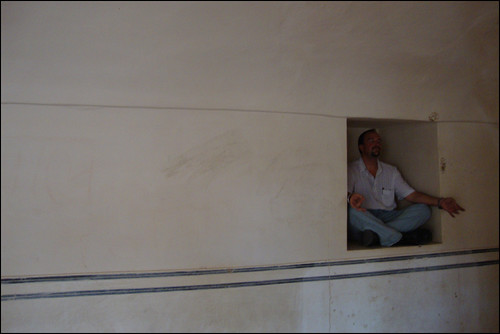
Perhaps you can wind down with some meditation

Or, an ice-cold bear
No comments:
Post a Comment